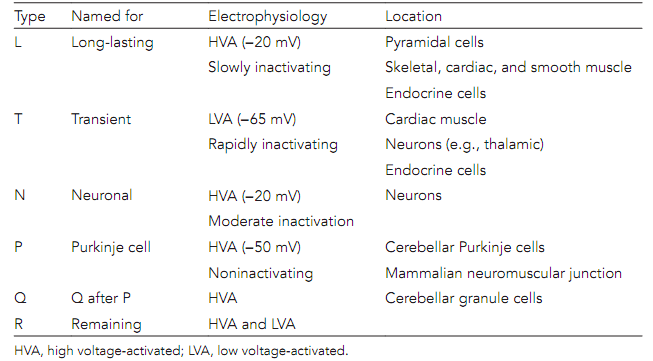Calcium channels
The Voltage-dependent calcium channels control the influx of calcium that couples excitation to transmitter release. They are also responsible for the calcium action potentials in dendrites, and for excitation–contraction coupling in muscle. There are numerous different types of calcium channel. They are all Ca2+ selective and activated by depolarization but can be differentiated by their electrophysiological properties, their sensitivity to blockade by drugs and toxins, their distribution and functions.
The types of Calcium channel are summarized in table shown below. The N-, P-, and Q-type high voltage-activated (HVA) channels which require large depolarization to activate them are included in transmitter release. The L-type channels are situated in proximal dendrites of pyramidal neurons and contribute to their excitability. They are the chief calcium channels mediating excitation–contraction coupling. The fast inactivating low voltage-activated (LVA) T-type channels produce burst firing and are significant in thalamic neurons.The Calcium channels share a high homology with the voltage-dependent sodium channels.

Table: Calcium channel types